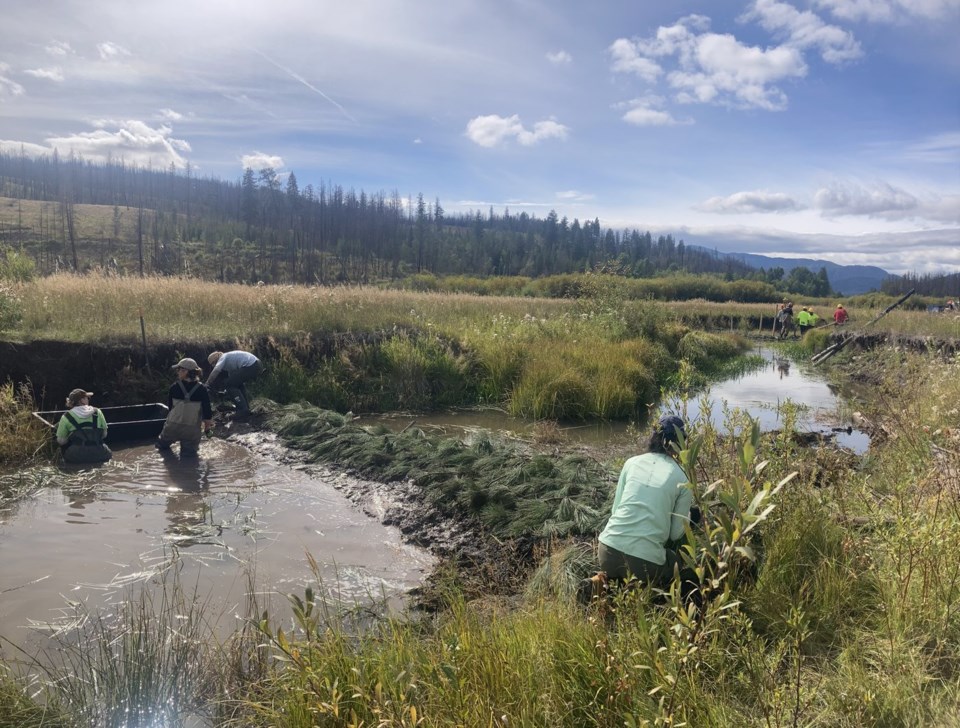In British Columbia's real estate market, many people dream of a turnkey starter home in a prime location.
Environmental researchers are hoping the same real estate principles will encourage beavers to move into prebuilt homes in some areas of the province and help improve wetlands.
More than 70 manmade beaver dams have been installed in Interior waterways since the B.C. Wildlife Federation project launched last year with the goal of building 100 dams by the end of 2025.
Researchers want to test whether beavers will move into the dams over the next several years, lifting the water in the streams to re-wet adjacent lands while encouraging growth of plants like willow and aspen for them to eat.
Dam-building teams of up to 10 people layered locally-sourced mud and branches as well as untreated wood posts to mimic beaver dams on small streams as far east as the East Kootenays, and west to near Lillooet.
Neil Fletcher, the federation's director of conservation stewardship, said the idea is to build "starter kits" of sorts, hoping that beavers will recognize the benefits of building on what has been left for them.
"What we're doing is we're basically putting in some furniture for them to get started. It's a bit more turnkey when it comes time for them to either find their way there just naturally, or to be moved there, which is something else we're looking into too," he said.
Fletcher said the province's beaver population has dropped over the last few hundred years thanks to the early fur trade and trapping, and many populations have never recovered.
Without beavers, he said, water levels can drop, meaning some streams won't connect to their flood plain as they naturally would.
But beavers are not returning to areas where they lived before.
Fletcher said the landscape has changed over the centuries, make it harder for them to access food and often areas don't have enough water for the beavers to feel safe.
"Beavers really suck at walking on land. They're much better in the water. So they don't like to have to go too far to get their food source. And they're a walking hamburger for coyotes, for bears, for all sorts of things that might want to eat them," he said.
"So a big part of what they need is access to food, close to streams, and then ideally a bit of a ponded area that they can see that they could set up shop there."
Fletcher acknowledges that some beavers can be a nuisance on land, but said the animals also have many benefits that have begun to be recognized over the last several decades.
He said some ranchers are interested in whether beaver dams could help get more water on the land base for their cattle. Beavers can also raise groundwater to the point where less water needs to be pumped onto farmers' fields, Fletcher said.
"There's a whole movement just in the idea that we should be living with these beavers and allowing them to occupy parts of the landscape where we can tolerate them and they can provide a tremendous amount of support to farmers," he said.
So far no beavers have moved into the dams installed as part of the pilot project, but Fletcher said it will likely take time for enough food to grow to make some of the sites feel like home.
"What we're hoping is, over the next few years, we'll establish enough food resources to make it a suitable site for relocation," he said.
This report by The Canadian Press was first published Dec. 27, 2024.
Ashley Joannou, The Canadian Press




